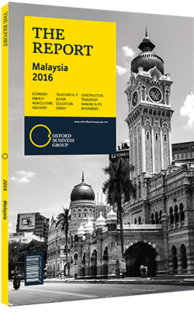Malsysia takes a new approach to tertiary education
The release of the National Education Blueprint for Higher Education 2015-25 in April 2015 was a clear indication of the Ministry of Education’s (MoE)’s plans for the future of higher education in Malaysia. It was also an acknowledgment of the shortcomings that have made such a policy review necessary.
Goals
The blueprint lays out a plan for sector development for the next ten years and sets key targets on areas ranging from expertise in research to student enrolment. In his foreword to the document, Najib Razak, the prime minister of Malaysia, stressed the importance of strengthening education in science, technology, engineering and mathematics, and the role education will play in allowing Malaysia to address key challenges resulting from the changing global environment, as well as realise its overall ambitions to become a knowledge-based economy and a centre for regional education.
The country significantly expanded higher education over the ten years leading to 2014, according to the blueprint, with enrolment up by 70% to 1.2m students, plus 108,000 international students. Annual spending on higher education alone is, on average, about 5.5% of total government spending, higher than its regional neighbours in East Asia and ASEAN.
Challenges
However, there are several key challenges facing the sector, and the MoE lays down a number of clear targets in the blueprint to overcome them. Employers, for example, complain graduates lack critical thinking skills and struggle to converse in English. Furthermore, budgetary constraints – in 2016 higher education funding dropped to 5% of total spending – have put pressure on public universities to become more financially independent and secure sustainable models of funding.
Targets
The targets laid out in the blueprint envisage enrolment rates at the tertiary level, including technical and vocational education training (TVET), increasing from 36% in 2014 to 53% by 2025; graduate employability rising to at least 80% from 75%; improved efficiency – government spending will remain at RM20,700 ($5124) per student per year; one university in the Asian top 25; two universities in the global top 100; four in the global top 200; at least 25th position in the Universitas 21 researching ranking; and 250,000 international students by 2025.
Private Participation
The blueprint also acknowledges the need for private sector involvement, particularly in the area of TVET. It is expected that, in line with the country’s economic development, some 1.2m skilled workers will be needed by 2020. Opportunities are likely to become available, both in training provision and also in industry collaboration. The Council of Trust for the People (MARA), for instance, is currently working with Airbus as part of the aircraft manufacturer’s development of a sustainable tooling supply chain. The document also makes clear that Malaysian universities, particularly those in the public sector, should look to monetise their assets, mostly in relation to property and land, and develop innovative businesses from their own research. Universities are also being encouraged to focus on specific disciplines, such as environmental science, agriculture and Islamic finance, to build up expertise and meet the research targets laid down in the blueprint. “It’s not good always to be a follower,” Mohd Saleh bin Jaafar, a consultant on the blueprint, told OBG. “We must look at areas where we can lead; where we can deliver a body of knowledge to the world,” noting that Malaysia already produces 41% of the global citations for Islamic finance.
However, although the blueprint gives institutions greater autonomy in areas of administration and in terms of their academic curriculum, it does not envisage giving public universities any power to determine the number or profile of their students. Therefore, while the blueprint has been widely welcomed for its ambition, the test will be in its implementation.
You have reached the limit of premium articles you can view for free.
Choose from the options below to purchase print or digital editions of our Reports. You can also purchase a website subscription giving you unlimited access to all of our Reports online for 12 months.
If you have already purchased this Report or have a website subscription, please login to continue.

